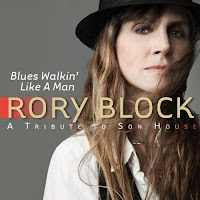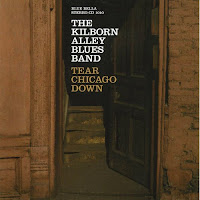 I remember years ago attending a Smithsonian Institute Folklife Festival in Washington which was devoted in part to the culture of Louisiana and New Orleans. It was chance to hear some blues like the late Boogie Bill Webb as well as it was my first exposure to the Mardi Gras Indian tradition other than the recordings of The Wild Magnolias and The Wild Tchoupitoulas, as members talked about and demonstrated the making of a costume as well as the various traditions involved. At the store where they sold items related to the Festival was a book of black and white photographs, Spirit World: Pattern in the Expressive Folk Culture of African-American New Orleans, It was essentially a catalogue of one of his exhibits documenting aspects of the cultural life and communities of New Orleans that was totally new to me, such as spiritual churches, and I slowly began to understand the interrelationship between the churches, the Indians, the music and other interrelated aspects that were the foundation for the New Orleans Rhythm and Blues Music that I loved (well I still d0). The book was republished by the Louisiana print house, Pelican, and is readily available.
I remember years ago attending a Smithsonian Institute Folklife Festival in Washington which was devoted in part to the culture of Louisiana and New Orleans. It was chance to hear some blues like the late Boogie Bill Webb as well as it was my first exposure to the Mardi Gras Indian tradition other than the recordings of The Wild Magnolias and The Wild Tchoupitoulas, as members talked about and demonstrated the making of a costume as well as the various traditions involved. At the store where they sold items related to the Festival was a book of black and white photographs, Spirit World: Pattern in the Expressive Folk Culture of African-American New Orleans, It was essentially a catalogue of one of his exhibits documenting aspects of the cultural life and communities of New Orleans that was totally new to me, such as spiritual churches, and I slowly began to understand the interrelationship between the churches, the Indians, the music and other interrelated aspects that were the foundation for the New Orleans Rhythm and Blues Music that I loved (well I still d0). The book was republished by the Louisiana print house, Pelican, and is readily available. I soon became aware of the importance that Smith had in documenting the music, culture and communities of New Orleans. His photos graced album covers and t-shirts (I proudly had t-shirts of his photos of James Booker and Clifton Chenier). Subsequently I acquired his marvelous book, A Joyful Noise: A Celebration of New Orleans Music, which is out of print.

When I first attended the New Orleans Jazz & Heritage Festival, in the mid-190s, I went to his tent in the crafts section of the Festival grounds which his daughter Leslie (herself a very fine jazz singer) was manning, and eventually purchased his then recently published book on the Mardi Gras Indians as well as a poster made from the Dancing Cat Professor Longhair album cover that was signed by him. Since I framed it upon getting home, it hangs in my bedroom.
Subsequently I purchased his New Orleans Jazz Fest, A Pictorial History, which chronicled the first 20 or so years of the festival from images of Mahalia Jackson with the Eureka Brass Band; Jackson with Duke Ellington, George Wein and Cousin Joe, Rashaan Roland Kirk with Herbie Mann's Band, Como Fife and Drum Band, Sonny Stitt with Ellis Marsalis, Sweet Emma Barrett, Sister Gertrude Morgan, Stevie Wonder with the Meters, Dizzy Gillespie and Bongo Joe, Benny Spellman, Professor Longhair, Nina Simone, etc (and that's in the first 50 odd of 200 pages). This book is in black and white and was followed by an JazzFest Memories with color photography which was done in collaboration with Allison Miner who wrote about the Festival's history.
I am obviously a fan of his work and was saddened when I found out he passed away on Friday, September 26. The New Orleans Times-Picayune celebrated his marvelous life in an obituary, Cultural archivist Michael Smith dies. If that link does not work, try http://tinyurl.com/3oz49v
An excerpt from John Pope's piece.
"Michael P. Smith, a photographer who spent three decades capturing vivid, vibrant images at jazz funerals, Mardi Gras Indian ceremonies and the New Orleans Jazz and Heritage Festival, died Friday at his New Orleans home of two diseases that destroyed his nervous system. He was 71.
A man of boundless energy who devoted himself to the culture he chronicled, Mr. Smith seemed to be everywhere at whatever event he was shooting. Fellow photographers joked that every good Jazzfest picture they took included the back of Mr. Smith's head.
Mr. Smith's subjects included Mahalia Jackson, Irma Thomas, James Booker, Harry Connick Jr., Professor Longhair and the Neville Brothers, as well as anonymous mourners, strutters and Indians whom Mr. Smith always managed to capture caught up in the moment.
"I don't think there's another photographer who has more sensitively documented very significant aspects of the second half of 20th century New Orleans culture," said Steven Maklansky, a former curator of photographs at the New Orleans Museum of Art."
The biography of him on his website, www.michaelpsmithphotography.com notes the many honors he earned. "In the last few years, Mike Smith has been honored with numerous awards. He received a Lifetime Achievement Award from the Louisiana Endowment for the Humanities in 2002 and was named Music Photographer of the Year by Offbeat magazine. In 2004, he received a Mayor's Arts Award from the Arts Council of New Orleans and a Clarence John Laughlin Lifetime Achievement Award from the New Orleans/Gulf South chapter of the American Society of Media Photographers (ASMP). In 2005, he received the Delgado Society Award (New Orleans Museum of Art), the first photographer to be so honored."
In Spring, 2007, the collection of his negatives and copyright to his work was transferred to the New Orleans Collection. The collection was over 500,000 negatives, most of which have never been printed and the New Orleans Collection intends to make more of his work available in the future. Smith's photographs are also in the permanent collections of the Bibliotheque National in Paris, the Metropolitan Museum of Art, the Smithsonian Institution and, locally, the New Orleans Museum of Art, the Ogden Museum of Southern Art, and the Louisiana State Museum.
A brief sample of his images can be downloaded from the website of The Historic New Orleans Collection. One can download issues of the newsletter, THNOC Quarterly at http://www.hnoc.org/publications/publications-quarterly.php#. It is the Spring 2008 issue.










